Meet the real monsters of Loch Ness
- Published

The pseudo-scorpion known as a knotty shining claw has been found in the Highland forest
Surveys of a large forest near Loch Ness have recorded rare insect species, including a midge not previously found in the UK - that does not bite.
The work at Findhorn-based Trees for Life's Dundreggan Conservation Estate also found a pseudo-scorpion called knotty shining claw.
The charity said it was the first time the creature had been recorded in Scotland north of the River Tay.
Two rare kinds of gnats were also detected in the forest in Glenmoriston.
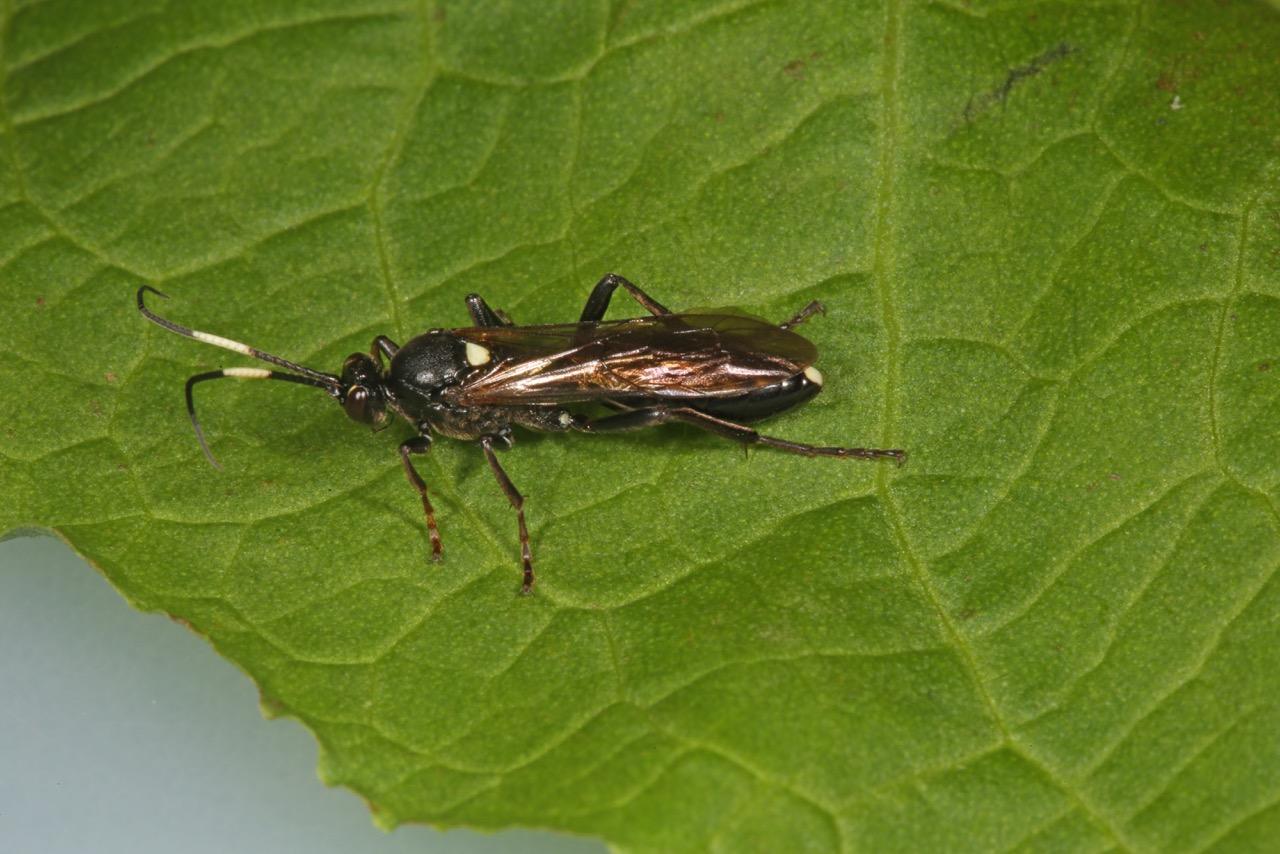
Other finds include parasitic wasp Diphyus salicatorius
The name Dundreggan is derived from Gaelic's Dul Drea-gain - the Dragon's Haugh.
Finds made in the latest surveys of the area, which were carried out last year, included:
Non-biting midge Chironomus vallenduuki - a first record of it in the UK and found by entomologist Peter Chandler
Gnat Sciophila varia - only known from four other UK sites
Gnat Mycomya nigricornis - only known in the UK from a handful of Scottish sites and had not been seen since 1990
Two rarely found parasitic wasps Homotropus pallipes and Diphyus salicatorius
Micro-moth the small barred longhorn Adela croesella - only documented at three other locations in Scotland, and never before this far north. It was found by volunteer Richard Davidson
Pseudo-scorpion Lamprochernes nodosus, also known as the knotty shining claw - first record in Scotland north of the Tay
The non-biting Chironomus vallenduuki does not pose the same irritation to animals, and human visitors to Dundreggan, as the vastly more common Scottish biting midge does.

Entomologist Peter Chandler at Dundreggan
Previous surveys have uncovered other hard to find invertebrates, and rarely seen behaviour by insects.
The previous discoveries have included species new to the UK such as a sawfly known as Nematus pravus and an aphid named Cinara smolandiae.
A strawberry spider, Araneus alsine, found at Dundreggan in 2010 had only been recorded seven times prior to being found in the Highland forest.
Two years later, a biting midge was also observed feeding on a larger cranefly. This behaviour had not previously been recorded in Europe, according Trees for Life.
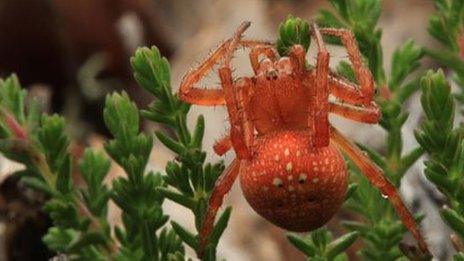
The rarely recorded strawberry spider Araneus alsine
Alan Watson Featherstone, Trees for Life's founder, said: "Dundreggan is a special part of the Caledonian Forest that keeps on revealing beautiful, interesting and rare species.
"The surprisingly rich wealth of life in this corner of the Highlands highlights the importance of concerted conservation action to protect and restore Scotland's wild places."
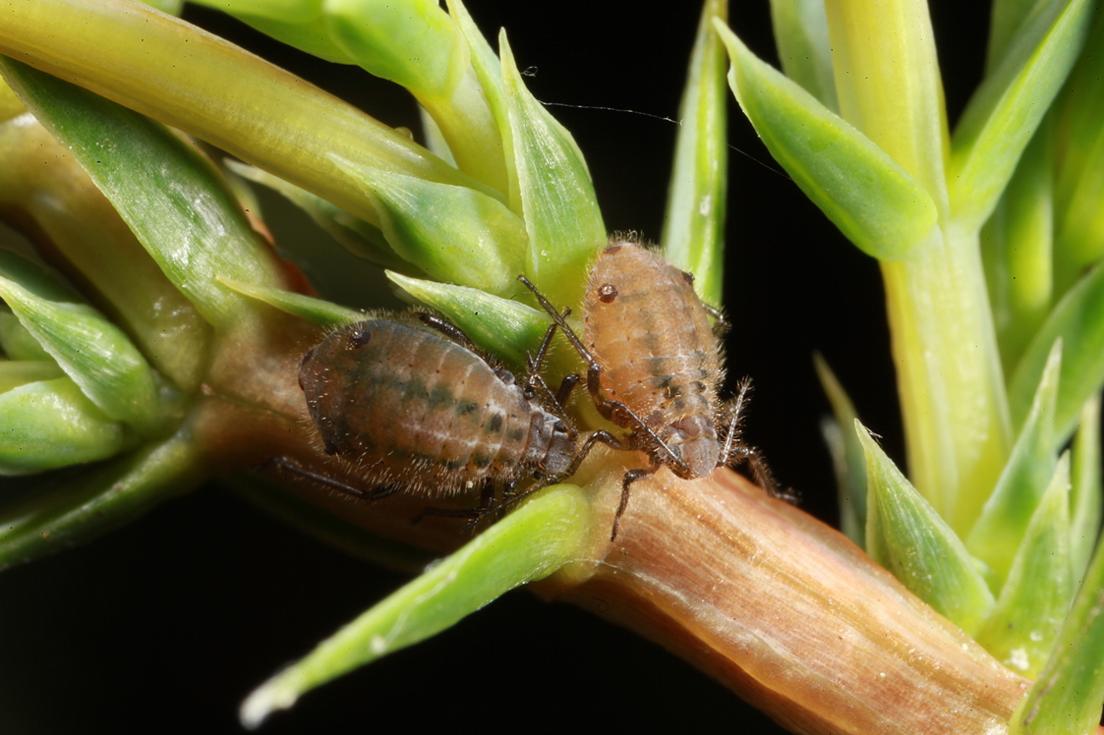
Aphid Cinara smolandiae has been among previous discoveries at Dundreggan
.
- Published27 May 2016
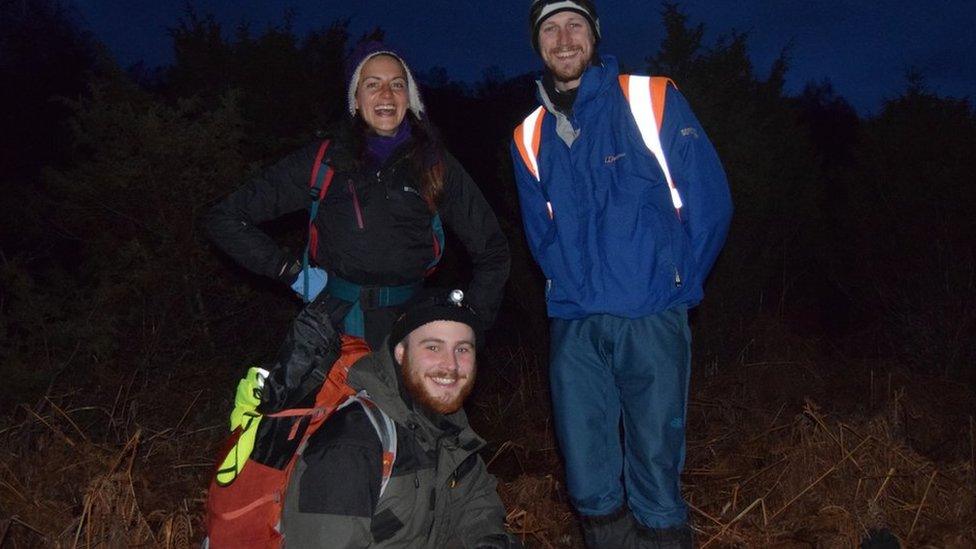
- Published22 November 2014
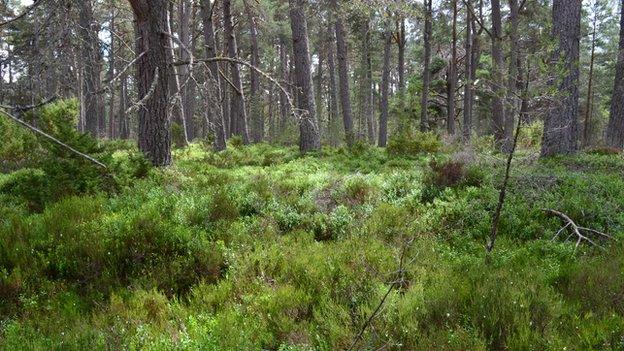
- Published7 February 2014
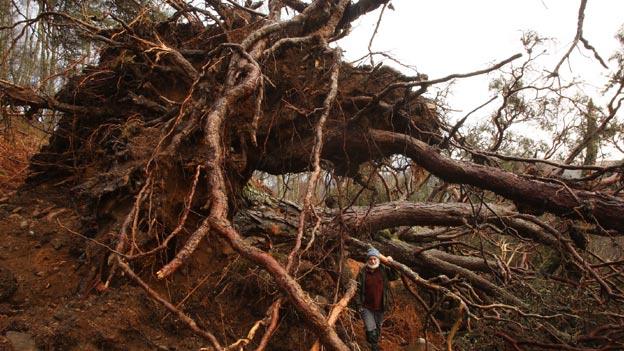
- Published5 March 2013
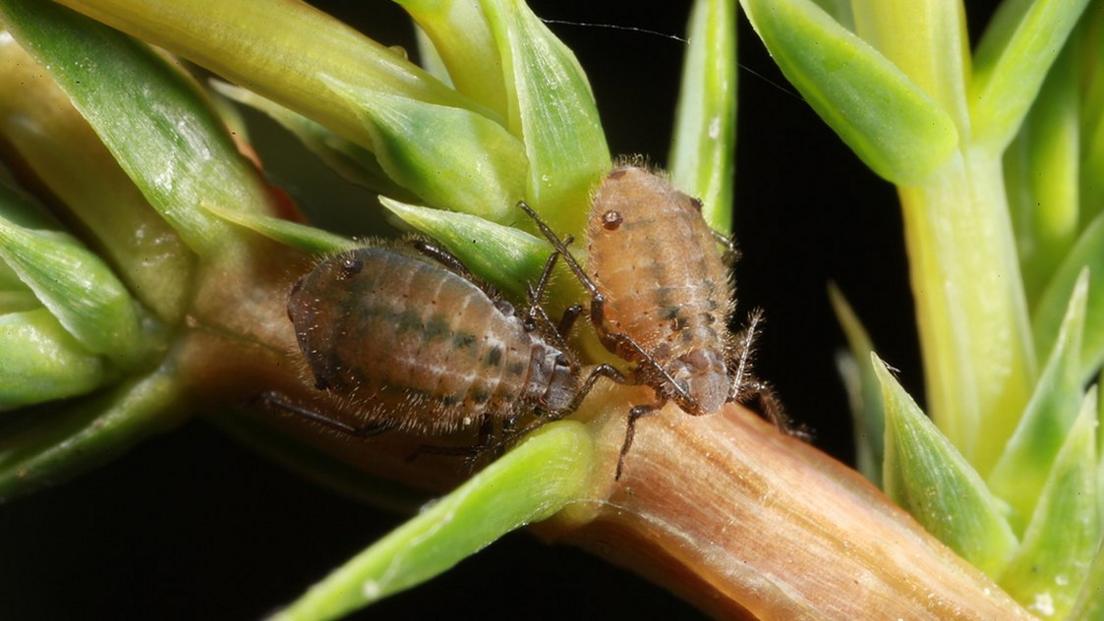
- Published17 December 2010